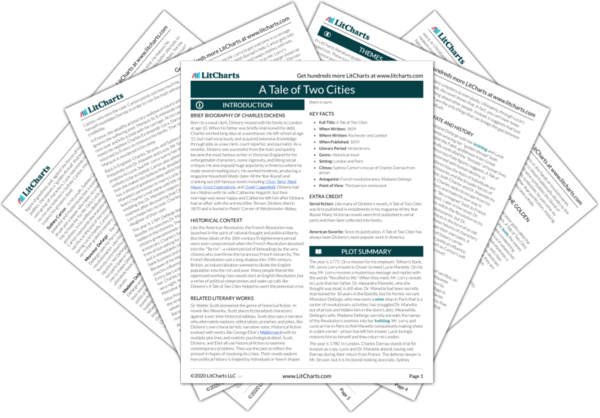Much of the action of A Tale of Two Cities takes place in Paris during the French Revolution, which began in 1789. In A Tale of Two Cities, Dickens shows how the tyranny of the French aristocracy—high taxes, unjust laws, and a complete disregard for the well-being of the poor—fed a rage among the commoners that eventually erupted in revolution. Dickens depicts this process most clearly through his portrayal of the decadent Marquis St. Evrémonde and the Marquis' cruel treatment of the commoners who live in the region under his control.
However, while the French commoners' reasons for revolting were entirely understandable, and the French Revolution was widely praised for its stated ideals of "Liberty, Equality, and Fraternity," Dickens takes a more pessimistic view. By showing how the revolutionaries use oppression and violence to further their own selfish and bloodthirsty ends, in A Tale of Two Cities Dickens suggests that whoever is in power, nobles or commoners, will fall prey to the temptation to exercise their full power. In other words, Dickens shows that while tyranny will inevitably lead to revolution, revolution will lead just as inevitably to tyranny. The only way to break this cycle is through the application of justice and mercy.
Tyranny and Revolution ThemeTracker












